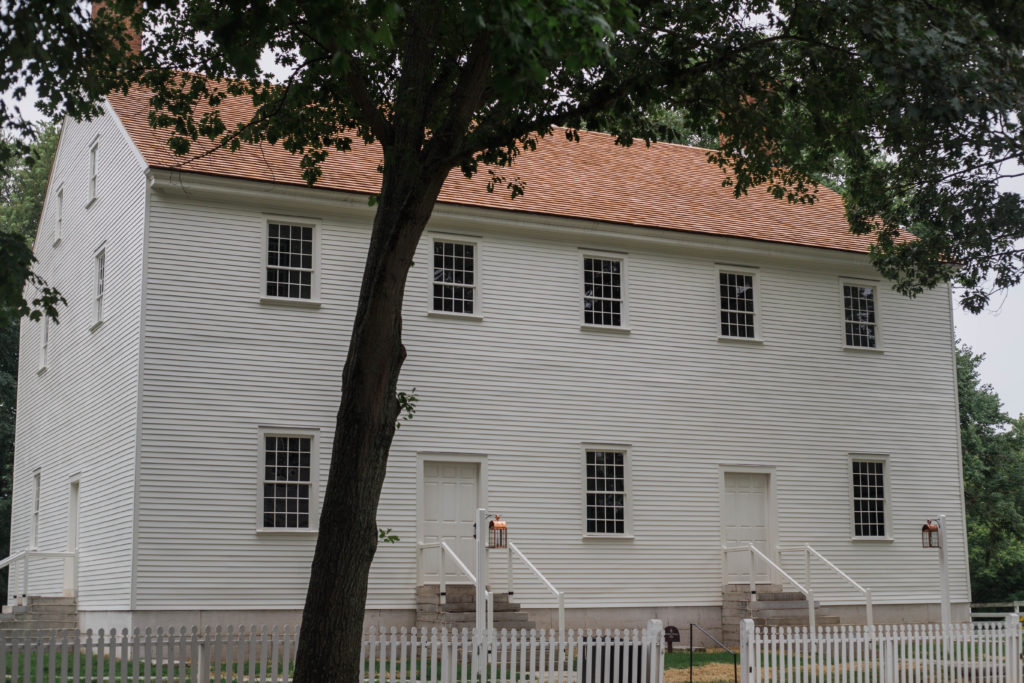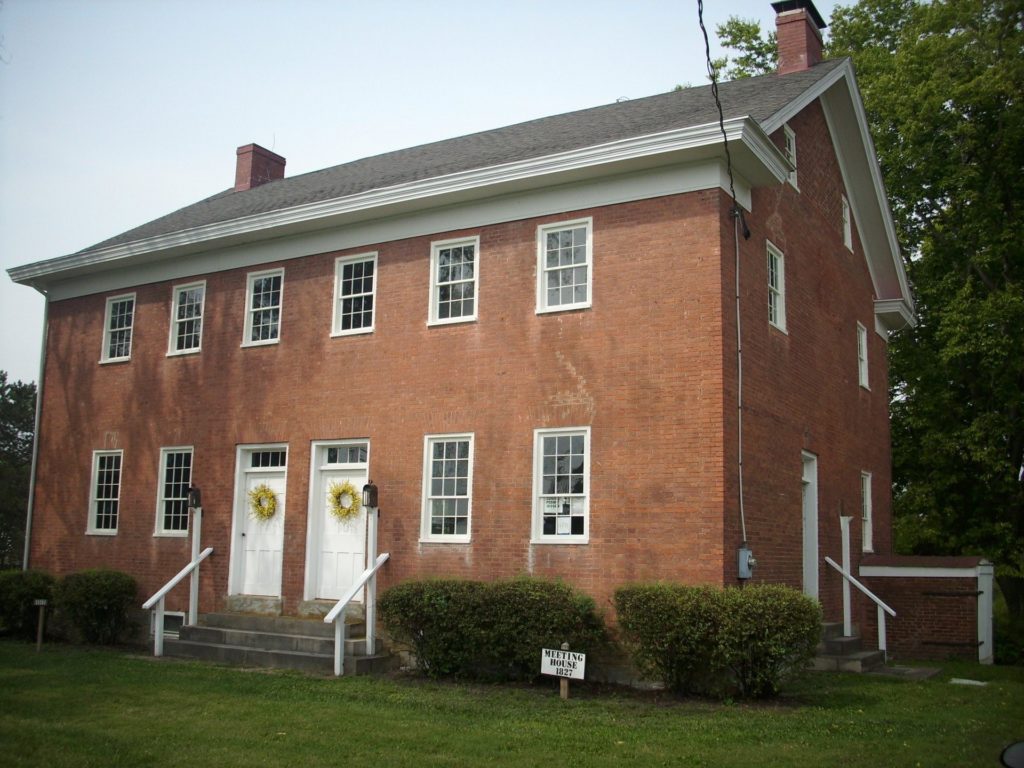Jacob A. Glover, PhD, Director of Public Programs and Education
“…The brethren started into the woods, about 3 ½ miles off, to cut timber for this [Meeting] House, the 3rd of January, 1820 and pronounced it done, the last of next October, which was 10 months in building, lacking 2 days.”
– Pleasant Hill Ministry to New Lebanon Ministry, March 1821
Here at Pleasant Hill we are accustomed to milestones and celebrations, but there’s something extra special in the air this October as we celebrate the 200th birthday of our beloved Meeting House! Both the physical and spiritual center of Pleasant Hill, the 1820 Meeting House has remained a marvel of Shaker architecture and an inspirational place of community-building since its completion.

As the passage that opens this post reveals, the Pleasant Hill Shakers constructed the 1820 Meeting House in a fairly short amount of time. From gathering materials and resources in January to worshipping in the space by November – it was quite the feat! Digging into this timeline a bit deeper, we can uncover some fascinating tidbits about the Pleasant Hill community, and the wider Shaker world, during this time.
First, we should note that this was the second Meeting House the Shakers built at Pleasant Hill. The first Meeting House was a stone building that stood just to the south of the Old Ministry’s Shop in what is now an open patch of lawn. Damaged by earthquakes in 1811 and 1812, by 1820 further use of this smaller space for worship was untenable.
In any case, Pleasant Hill had also decided to reorient the center of their community to where the Centre Family Dwelling and 1820 Meeting House now stand. The frenzied 10-month build, therefore, was much more than mere physical labor – it quite literally transformed how Pleasant Hill conceptualized and understood their community for the rest of its existence.
In relation to the wider Shaker world, the 1820 Meeting House at Pleasant Hill was one of four meeting houses built by western Shaker communities around this time that all shared similar characteristics and dimensions. At Union Village in Ohio, the Shakers constructed an almost identical 44’ x 60’ building in 1818 in which the second floor and roof were supported by a bridge truss in the attic. In 1819, the South Union Shakers built their meeting house, and White Water (another Ohio village) completed their similar building in 1827.

The similarities in construction and use reveal how connected the different Shaker communities were, and that ideas and information were shared amongst all for the betterment of each community. The unique history of each of these buildings in the intervening years, however, provides perspective and an appreciation for everything that has been done to preserve and protect the 1820 Meeting House at Pleasant Hill over the last 200 years.
As we move through October we will return to the Meeting House in several blog posts and begin to uncover some of these stories of community use, transformation, preservation, and inspiration that have transpired inside this amazing structure!